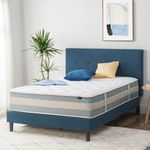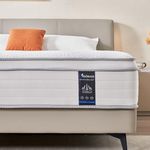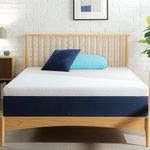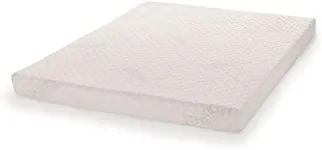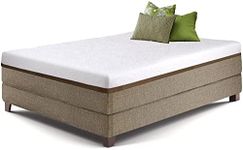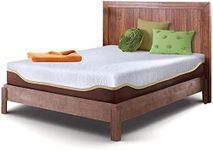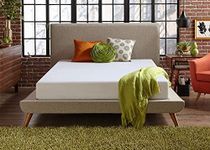Buying Guide for the Best Affordable Hybrid Mattress
Choosing the right hybrid mattress can significantly impact your sleep quality and overall health. A hybrid mattress combines the benefits of innerspring coils and foam layers, offering a balance of support and comfort. When selecting an affordable hybrid mattress, it's essential to consider several key specifications to ensure you get the best fit for your needs. Understanding these specs will help you make an informed decision and find a mattress that provides the right level of comfort, support, and durability for you.Mattress FirmnessFirmness refers to how soft or hard a mattress feels. It's important because it affects your comfort and spinal alignment. Firmness is usually rated on a scale from 1 to 10, with 1 being very soft and 10 being very firm. Soft mattresses (1-3) are ideal for side sleepers who need cushioning for their shoulders and hips. Medium mattresses (4-6) are suitable for back sleepers who need a balance of support and comfort. Firm mattresses (7-10) are best for stomach sleepers or those who need extra support to prevent sinking. Choose a firmness level based on your sleeping position and personal preference.
Support CoreThe support core is the innerspring layer of a hybrid mattress, providing the primary support structure. It's important because it affects the mattress's durability and ability to support your body weight. Support cores can vary in coil type and count. Pocketed coils are individually wrapped and offer better motion isolation, making them ideal for couples. Continuous coils are more durable and provide consistent support. Higher coil counts generally indicate better support and durability. Consider your weight and whether you share the bed when choosing the support core.
Comfort LayersComfort layers are the foam or latex layers on top of the support core, providing cushioning and pressure relief. These layers are important because they determine how comfortable the mattress feels. Common materials include memory foam, latex, and polyfoam. Memory foam offers excellent contouring and pressure relief, making it suitable for those with joint pain. Latex is more responsive and cooler, ideal for hot sleepers. Polyfoam is more affordable but may not be as durable. Choose comfort layers based on your need for pressure relief, responsiveness, and temperature regulation.
Edge SupportEdge support refers to the mattress's ability to support weight around its edges without sagging. It's important for maximizing the usable sleep surface and providing stability when sitting on the edge. Good edge support is beneficial for couples who need more space and for those who sit on the edge of the bed frequently. Mattresses with reinforced edges or higher-density foam around the perimeter offer better edge support. Consider edge support if you share your bed or tend to sit on the edge often.
Motion IsolationMotion isolation is the mattress's ability to absorb and minimize movement across the surface. It's important for light sleepers who are easily disturbed by their partner's movements. Mattresses with good motion isolation prevent motion transfer, allowing for undisturbed sleep. Memory foam and pocketed coils typically offer better motion isolation compared to continuous coils or latex. If you share your bed and are sensitive to movement, prioritize a mattress with high motion isolation.
Temperature RegulationTemperature regulation refers to the mattress's ability to maintain a comfortable sleeping temperature. It's important for preventing overheating during the night. Hybrid mattresses often include cooling features like gel-infused foam, breathable covers, or latex layers to enhance airflow. If you tend to sleep hot, look for a mattress with cooling technologies. Consider your climate and personal comfort preferences when evaluating temperature regulation.
DurabilityDurability refers to how long the mattress will maintain its support and comfort. It's important for ensuring a good return on your investment. Durable mattresses are made with high-quality materials and construction techniques. Look for features like high-density foams, robust coil systems, and strong edge support. Consider your weight and how often you use the mattress when assessing durability. A more durable mattress will provide consistent comfort and support over a longer period.


